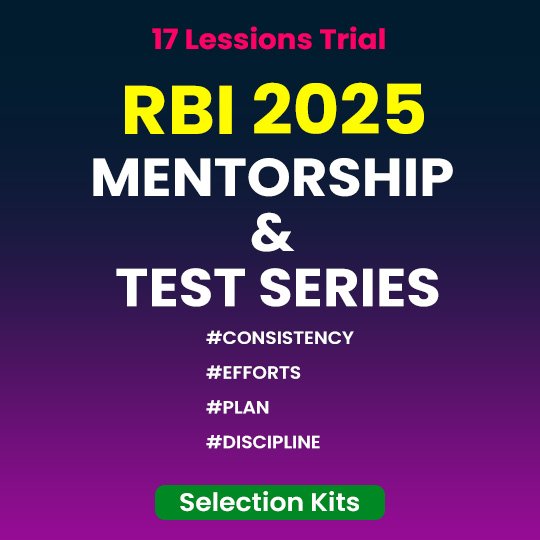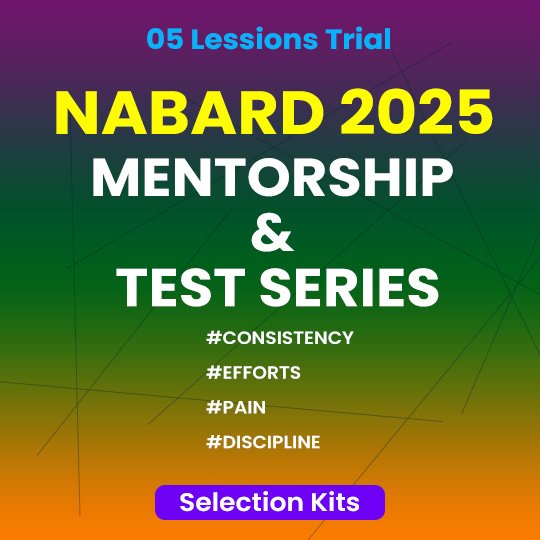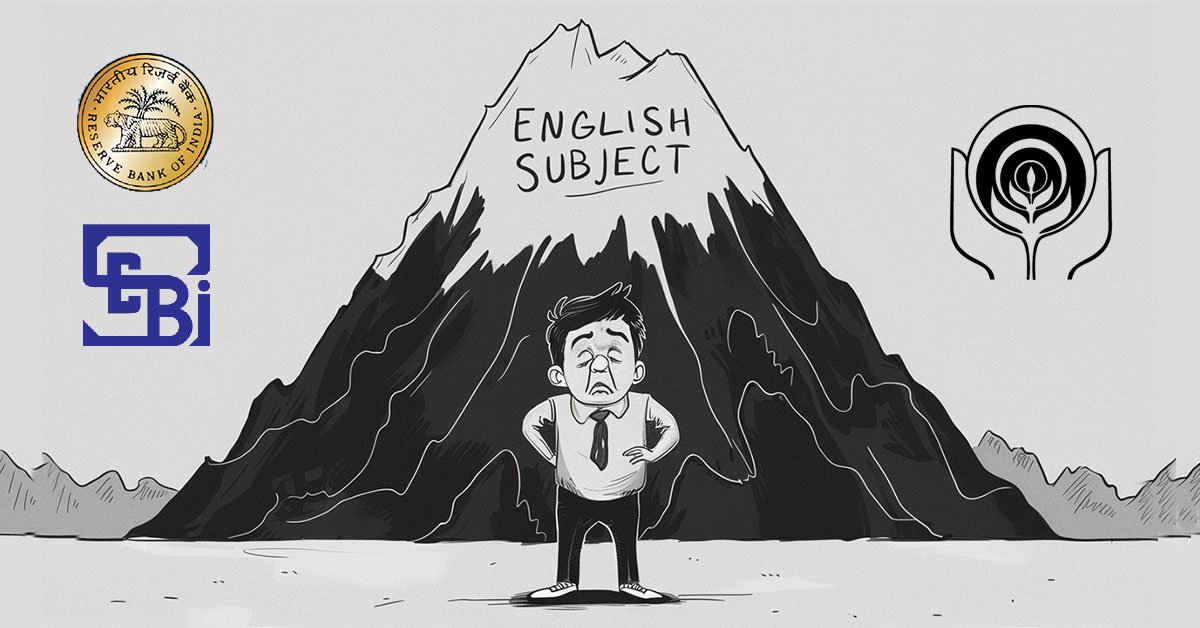Daily Current Affairs Quiz
16 & 17 November, 2025
National Affairs
1. Indo-Pacific Humpback Dolphin (Sousa plumbea)
Source: TH
Context:
A rare example of human–wildlife cooperation between Indo-Pacific humpback dolphins (Sousa plumbea) and traditional artisanal fishers in Kerala’s Ashtamudi Lake (Kollam) will be the focus of an international research project running until 2028. The study aims to understand the ecological and behavioural mechanisms behind this unique inter-species collaboration.
Indo-Pacific Humpback Dolphin (Sousa plumbea)
The Indo-Pacific humpback dolphin is a coastal marine mammal found in the warm waters of the Indian Ocean and western Pacific.
- Scientific name: Sousa plumbea
- Family: Delphinidae
- Common name: Indo-Pacific humpback dolphin
- Category: Marine cetacean (toothed whale group)
- IUCN Red List: Endangered (in many local populations)
What Is the Dolphin–Fisher Cooperation?
In Ashtamudi Lake, a remarkable symbiotic behaviour occurs:
- Dolphins drive schools of fish towards shallow waters near the shoreline.
- They signal the fishers by tail-slaps or rolling behaviour.
- Fishers immediately cast their nets, resulting in:
- High fish catch for humans
- Access to scattered fish for dolphins
This mutually beneficial behaviour is extremely rare and is considered one of the last surviving examples of human–wildlife cooperative hunting.
Ashtamudi Lake (Kerala)
Ashtamudi Lake is the second-largest estuarine system in Kerala and a major part of the Kollam Backwaters. Its name means “eight-coned,” referring to its eight canal-like arms.
Location
- Situated in Kollam district, Kerala.
- Connected to the Neendakara estuary and ultimately the Arabian Sea.
- An important part of the Ashtamudi–Vembanad wetland system
2. e-Jagriti Platform
Source: PIB
Context:
The e-Jagriti consumer grievance-redressal platform has crossed 2.75 lakh users, including 1,388 NRIs.
In 2025, the platform achieved record disposal efficiency, surpassing 2024 performance.
In several states, case disposal exceeded new filings (for example, 27,545 cases disposed vs. 27,080 filed during July–August 2025), showing significant backlog reduction.
About e-Jagriti Platform
e-Jagriti is a unified, AI-enabled digital consumer grievance-redressal platform developed by the Department of Consumer Affairs, Government of India. It integrates all consumer dispute-resolution systems into one seamless portal.
- Aim
- To provide faster, transparent, accessible, and paperless consumer justice across India and abroad, empowering MSMEs, households, and NRIs through real-time, technology-driven grievance redressal.
- Organisation Involved
- Developed and operated by the Department of Consumer Affairs, Government of India.
Key Features of e-Jagriti
- Unified, paperless consumer courts integrating all legacy systems with e-filing, digital scrutiny, electronic notices, virtual hearings, secure document flow, and role-based dashboards.
- Global accessibility for NRIs through remote filing, tracking, OTP login, encrypted document exchange, virtual courts, and integrated fee payments.
- AI-powered, multilingual interface with chatbot support, voice-to-text tools, smart case routing, accessibility features, and real-time tracking.
- High disposal efficiency in 2025, where many states reported disposal rates higher than new case filings.
- Integrated communication system sending over 2 lakh SMS alerts and 12 lakh emails for case updates, notices, OTP verification, and deadlines.
- Secure fee payments enabled through PayGov and Bharat Kosh.
3. AMRIT (Affordable Medicines and Reliable Implants for Treatment) Pharmacy
Source: TH
Context:
The Union Health Minister, J.P. Nadda, inaugurated the 10th anniversary celebrations of AMRIT (Affordable Medicines and Reliable Implants for Treatment) Pharmacy in New Delhi. AMRIT pharmacies were established to provide affordable, life-saving medicines and medical implants to patients across India.
Key Highlights:
- 10 new AMRIT pharmacy outlets were launched across India.
- AMRIT pharmacies offer 50%–90% discount on essential and life-saving medicines, surgical implants, and consumables.
- The initiative complements other affordable medicine schemes such as Pradhan Mantri Jan Aushadhi Yojana.
About AMRIT Pharmacy
- Launched by the Government of India in 2015 to reduce the burden of high medicine costs.
- Operated mainly in government hospitals and major public healthcare institutions.
- Focus areas include:
- Life-saving cardiac drugs
- Cancer medicines
- Orthopaedic implants
- Critical care drugs
- Consumables and medical devices
4. Protection of Children from Sexual Offences (POCSO) Act, 2012
Source: TH
Context:
The Supreme Court recently issued notice in a case where a woman is accused of penetrative sexual assault under Section 3 of the POCSO Act, 2012. The accused argues that the law is gender-specific and applies only to male offenders. This raises an important question: Is POCSO gender-neutral for both perpetrators and victims?
Legal and legislative evidence strongly suggests YES.
Key Features of the POCSO Act:
| Feature | Details |
|---|---|
| 1. Child-Centric & Gender-Neutral Law | • Applicable to all children aged 0–18 years • Protects boys and girls equally. |
| 2. Clear Definition of Sexual Offences | • Penetrative sexual assault • Aggravated penetrative sexual assault (by police, teachers, relatives, public servants, repeat offenders, etc.) • Sexual assault • Sexual harassment • Using a child for pornography |
| 3. Mandatory Reporting | • Any person aware of an offence must report it. • Failure to report can lead to criminal liability. |
| 4. Special Courts | • Each district must establish Special POCSO Courts. • Ensures child-friendly, speedy trial proceedings. |
| 5. Child-Friendly Procedures | • Child’s statement can be recorded at home/comfortable place. • Child should not face the accused. • Child’s identity must remain confidential. • Medical examination preferably by a woman doctor. |
| 6. Strict Punishments | • Includes rigorous imprisonment + fines. • Death penalty allowed for aggravated penetrative sexual assault (enhanced after 2019 & 2020 reforms). |
| 7. Protection from Child Pornography | • Criminalizes creating, storing, distributing, transmitting child porn. • Stricter rules under the 2019 Amendment. |
Why the POCSO Act Is Gender-Neutral
The Text of the Law Supports Gender Neutrality
- Section 3 defines penetrative sexual assault in a broad, gender-neutral manner.
- It includes:
- Digital penetration
- Penetration with objects
- Oral acts
- Acts where the child is made to perform penetrative acts on another person
- These can be committed by persons of any gender, including women.
- Section 13(1) of the General Clauses Act, 1897 states:
Words importing the masculine gender include females, unless context requires otherwise. - Therefore, the use of “he” in Section 3 automatically includes “she”.
5. Indigenous Integrated Drone Detection and Interdiction System (Mark-2)
Context:
India is set to enhance its counter-drone warfare capabilities as the Army and Indian Air Force (IAF) prepare to procure 16 indigenous Integrated Drone Detection and Interdiction System (Mark-2) units.
About Integrated Drone Detection and Interdiction System (Mark-2)
- What It Is
An advanced indigenous counter-drone warfare platform designed to detect, track, and neutralise hostile unmanned aerial systems using a combination of sensors, jammers, and high-energy laser weapons. - Developed By
Defence Research and Development Organisation (DRDO), led by CHESS – Centre for High Energy Systems & Sciences, in collaboration with the Armed Forces. - Aim
To provide India with a rapid-response, precise, high-energy counter-drone system capable of neutralising surveillance drones, weaponised UAVs, and swarm attacks across sensitive borders, military bases, and critical infrastructure.
Key Features
- 10 kW Laser Neutralisation capable of engaging enemy drones at up to 2 km, doubling the range of the earlier Mark-1 system.
- Multi-sensor detection suite integrating radar, EO/IR sensors, RF detectors, and AI-enabled algorithms for real-time detection and classification.
- Hard-Kill + Soft-Kill Capability: Disables drones using both laser beams (hard kill) and RF jamming/GNSS spoofing (soft kill).
- Vehicle-mounted and Rapidly Deployable: Mobile platform suitable for borders, forward bases, airports, and urban protection zones.
- Next-generation integration with 30 kW high-energy laser systems planned for future strikes up to 5 km.
6. NITI Aayog Panel Recommends 17 Reforms for MSMEs
Source: TOI
Context:
A high-level committee chaired by NITI Aayog member Rajiv Gauba has proposed 17 reforms aimed at reducing regulatory and financial pressures on micro, small, and medium enterprises (MSMEs).
The reforms focus on credit access, compliance simplification, tax procedures, dispute resolution, and CSR obligations, with timelines for implementation under review by ministries.
Key Recommendations
Credit Access
- Expand CGTMSE (Credit Guarantee Fund Trust for Micro & Small Enterprises) to include manufacturing medium enterprises.
- Extend credit guarantee cover to receivables on TReDS to ensure faster payments.
Dispute Resolution & MSME Protection
- Strengthen pre-appeal deposit provisions under the MSME Development Act for government entities:
- Mandatory pre-deposit of 75% of arbitral award value.
- Partial release of at least 50% of dues after six months to micro and small suppliers.
- Allow appointment of a sole arbitrator to accelerate arbitration.
Corporate Compliance Reforms
- Exempt micro and small companies from mandatory CSR obligations.
- Reduce mandatory board meetings from two per year to one.
- Remove auditor appointment requirement for companies with turnover < ₹1 crore.
Tax & GST Reforms
- Raise tax audit exemption limit for companies with >5% cash receipts from ₹1 crore to ₹2 crore.
- Reduce GST penalties for small errors by micro enterprises and lower interest rates.
- Decrease frequency of GST return filing for MSMEs.
Expected Impact
- Simplified regulatory compliance for micro and small companies.
- Faster access to credit and improved cash flow through TReDS and CGTMSE.
- Reduced financial burden, including lower taxes, penalties, and audit requirements.
- Quicker resolution of payment disputes, enhancing business sustainability.
7. Birsa Munda: 150th Birth Anniversary (Janjatiya Gaurav Diwas)
Source: IE
Context:
Prime Minister and Home Minister paid tribute to Bhagwan Birsa Munda on his 150th birth anniversary, celebrated nationwide as Janjatiya Gaurav Diwas. The day honours his contributions to tribal rights, freedom struggle, and cultural identity.
Who Was Birsa Munda?
- Birsa Munda (1875–1900) was a legendary tribal freedom fighter, social reformer, and spiritual leader of the Munda tribe.
- Revered as “Bhagwan” and “Dharti Aaba” (Father of the Earth).
- Symbol of tribal resistance against British rule and exploitation.
Birth & Early Life
- Born in Ulihatu village, present-day Khunti district, Jharkhand.
- Grew up in the Chhotanagpur Plateau region.
- Lived in Chalkad and Kurumbda, and studied in Salga and Chaibasa.
- Originally named Daud Munda after his family briefly converted to Christianity.
What Was Ulgulan?
- The Munda Rebellion (Ulgulan = “Great Tumult”) led by Birsa Munda (1890s).
- A movement against:
- British land policies
- Land alienation
- Forced labour (begar)
- Exploitation by thikadars and moneylenders
- Missionary interference in tribal customs
Major Contributions
- Defended Mundari Khuntkatti (traditional land ownership system).
- Mobilised Munda, Oraon, and Kharia tribes for self-rule and land rights.
- Coined the famous slogan:
“Abua Raj setar jana, Maharani Raj tundu jana”
(End British rule, establish our own rule) - Practised guerrilla warfare against British police stations, churches, and colonial offices.
Social & Religious Reforms
- Fought against alcoholism, superstitions, and social evils.
- Emphasised cleanliness, discipline, and cultural identity.
- Founded the Birsait sect — blending spirituality with social reform.
Unique Facts About Birsa Munda
- A talented musician who played flute and tuila.
- Actively involved in village akhra (community dance gatherings).
- Arrested and died at just 25 years in Ranchi Jail (1900).
Banking/Finance
1. RBI’s 10% Tier-I Cap on Acquisition Financing Seen as Restrictive
Source: BS
Context:
The Reserve Bank of India (RBI) released a draft circular on October 24, 2025, proposing guidelines to allow banks to finance corporate acquisitions. This is a major policy shift, since Indian banks were earlier barred from lending for mergers and acquisitions due to risks of over-leverage and promoter-level funding. Under the new proposal, banks may fund corporate acquisitions—domestic or overseas—only if they create long-term strategic value and not merely support financial restructuring.
Key Provisions of RBI’s Draft Norms
- Banks may finance up to 70% of the acquisition cost.
- Acquirer must bring 30% equity from its own resources.
- Only listed companies with strong net worth and at least 3 years of profitability are eligible.
- A bank’s total exposure to acquisition financing is capped at 10% of Tier-I capital.
Why Banks Find the 10% Cap Restrictive
Bankers argue that:
- A 10% limit of Tier-I capital is too low and reduces the ability of large banks to support meaningful M&A deals.
- The 30% equity contribution should not be limited to “pure equity.”
They suggest including:- Preference shares
- Convertible instruments
- Other eligible hybrid capital instruments
Some executives believe the exposure cap could be raised to around 30% of Tier-I capital for well-governed banks.
Why RBI Is Being Cautious
Experts say the central bank’s conservative limits reflect genuine risks:
1. Uncertain outcomes of acquisitions
Not all M&A deals succeed. If a bank funds a deal based on optimistic projections and the acquisition fails, it can turn into a bad loan.
2. Asset–Liability Mismatch (ALM)
- Acquisition loans are long-term.
- Banks often raise short-term funds, leading to liquidity risks if the loan turns bad.
Banks will therefore need stronger credit underwriting and dedicated long-term funding structures.
Need for Strong Internal Frameworks
Experts advise banks to:
- Strengthen credit underwriting capabilities
- Build robust risk assessment structures
- Establish dedicated acquisition finance teams
- Develop internal guardrails before seeking regulatory relaxations
Analysts add that banks must first build a high-quality acquisition finance book, especially through mid-market deals, before asking RBI for softer rules.
Inclusion of Mid-Market & Family-Owned Firms
EY notes that restricting eligibility only to listed companies excludes:
- Profitable unlisted mid-market firms
- Family-owned businesses
These segments drive a major share of India’s industrial expansion.
A calibrated expansion of eligibility may be required later.
Why Banks Want the Norms Liberalised
Bank credit growth to corporates has slowed as companies rely increasingly on:
- Bond markets
- Overseas loans
- Equity markets
Bankers believe acquisition financing could develop similarly to infrastructure financing, where:
- A few large banks build strong expertise
- Smaller banks piggyback by taking smaller participations
Key Risks Identified
- Asset–liability mismatch due to long-tenure loans
- Credit underwriting challenges due to unpredictable acquisition outcomes
- Need for dedicated long-term funding
- Risk of over-exposure if norms are liberalised prematurely
2. Reforming Lending to Low-Income Households in India
Source: BS
Context:
India has developed a robust last-mile credit ecosystem, yet repeated shocks over the past 15 years—Andhra Pradesh crisis (2010), demonetisation (2016), Covid-19 (2020), and the slowdown since early 2024—have caused abrupt lending cuts and household distress.
The solution lies in moving from stop-start lending cycles to continuous, reliable access to formal credit for low-income households.
Key Recommendations
Harmonise Bank-NBFC Partnership and Strengthen PSL
- India’s credit ecosystem spans universal banks, small finance banks (SFBs), NBFCs, and fintechs, linked through direct assignments, co-lending, lending service providers, and business correspondent arrangements.
- Current anomalies:
- SFBs cannot co-lend, unlike banks and NBFCs.
- Income from DA assignments is recognised upfront, but not in other formats.
- Default guarantees allowed in co-lending but not in direct origination.
- Recommendation:
- Supervise overall bank exposure to non-banks, not just individual transactions.
- Ensure originators/servicers commit adequate capital to align incentives.
- Refine Priority Sector Lending (PSL) by increasing weightage for underserved segments and districts.
Reduce Funding Fragility
- Household credit relies heavily on bank funding, including NBFC balance sheets and off-balance-sheet instruments.
- This channel concentration makes the system vulnerable to sudden stops.
- Solution:
- Deepen capital market access for NBFCs.
- Provide market-making support for NBFC bonds and securitised instruments to ensure continuity in credit supply during stress.
Replace Crude Lender Caps with Credible Income Assessment
- Traditional caps (e.g., max three lenders per borrower) are too blunt, risking exclusion of entrepreneurial households.
- Recommendation:
- Use income proxies, occupational archetypes, and soft information from frontline workers for assessing repayment capacity.
- Establish RBI technical committee standards for minimum validation, governance, and calibration.
- Leverage the forthcoming all-India household income survey by Ministry of Statistics and Programme Implementation for benchmarking.
Rationale
- Despite concerns about over-leverage, household debt is 42% of GDP, lower than many emerging markets.
- Informal borrowing persists and universal banks struggle to meet PSL targets consistently.
- Harmonised rules, diversified NBFC funding, and credible income assessment can smooth credit access, reduce boom-bust cycles, and minimise disruption to livelihoods.
3. NUCFDC Seeks RBI Nod for Smaller Urban Cooperative Banks
Source: Mint
Context:
The National Urban Co-operative Financial and Development Corporation Ltd (NUCFDC)—the apex body representing India’s urban cooperative banks (UCBs)—is preparing to request the RBI to allow small UCBs with net worth below ₹50 crore to offer digital services such as internet banking, mobile banking, and UPI.
Current RBI Rules
Under existing RBI regulations:
- Only UCBs with net worth above ₹50 crore can offer digital services.
- Over 50% of India’s 1,462 UCBs fail to meet this benchmark.
- These smaller UCBs collectively form a large part of the cooperative banking ecosystem that holds ₹5.5 trillion in deposits.
This restriction means a majority of UCBs cannot provide modern digital banking facilities to their customers.
What NUCFDC Is Proposing
NUCFDC wants RBI to consider an alternative compliance model:
- If smaller UCBs become part of a centralized, secure, standardized technology infrastructure, they should be allowed to offer digital services even without ₹50 crore net worth.
- The argument: shared infrastructure reduces cyber risk and ensures uniform quality.
NUCFDC’s Role and Infrastructure Plan
NUCFDC received its licence in February 2024 as a mid-layer NBFC.
Its current focus is non-fund-based support for UCBs, especially digital modernization.
Key components of the central stack NUCFDC is building:
- IT hardware and applications
- Digital banking platforms
- Cybersecurity systems
- Centralized manpower and maintenance
- A unified architecture that UCBs can plug into
This infrastructure is being built for 440 UCBs that have partnered with NUCFDC so far.
Why This Matters
- The cooperative banking sector serves small businesses, lower-income customers, and urban neighbourhood markets.
- Lack of digital services limits their competitiveness against scheduled commercial banks and small finance banks.
- Digital access is increasingly essential for customer retention, payments, and compliance.
Pending Regulatory Response
Queries sent to RBI and the finance ministry remain unanswered.
RBI will need to evaluate whether the proposal aligns with:
- Cybersecurity standards
- Operational resilience
- Consumer protection
- Risk management norms for banks with weaker capital buffers
India’s Urban Cooperative Banks (UCBs)
Urban Cooperative Banks (UCBs) are financial institutions operating on a cooperative model, primarily serving urban and semi-urban areas. They cater to lower- and middle-income groups, small businesses, and local communities.
Key Features of UCBs:
- Cooperative Structure: Owned and managed by members on the principle of “one member, one vote.”
- Urban/Semi-Urban Focus: Serve cities and towns, unlike rural cooperative banks that cater to villages.
- Regulated by Dual Authorities:
- RBI: Banking functions, licensing, prudential norms, supervision.
- State Government / Central Registrar: Management and administrative aspects.
- Product Offerings: Provide deposits, loans, advances, and basic retail banking services. Larger UCBs also offer digital banking and RTGS/NEFT.
- Types:
- Scheduled UCBs: Included in the RBI’s Second Schedule; enjoy higher regulatory credibility.
- Non-Scheduled UCBs: Smaller banks not in the Second Schedule.
Agriculture
1. India’s Agricultural Exports: Trends, Drivers, Challenges and Import Patterns (2024–25 to 2025–26)
Source: IE
Context:
India’s agricultural exports are growing faster than overall merchandise exports, reflecting resilience in the farm sector amidst global uncertainty, trade restrictions, and commodity price volatility.
Export Trends (2024–25 to April–Sept 2025)
Strong Growth in 2025–26 (April–Sept 2025)
- Agricultural exports:
- $25.9 billion (Apr–Sep 2025) vs $23.8 billion (Apr–Sep 2024)
- Growth: 8.8%
- Overall merchandise exports:
- $219.9 billion vs $213.7 billion
- Growth: 2.9%
Performance in FY 2024–25 (April–March)
- Agricultural exports:
- ↑ from $48.8 billion to $52 billion (growth: 6.4%)
- Merchandise exports:
- ↑ marginally from $437.1 billion to $437.7 billion (growth: 0.1%)
India’s farm exports clearly outperformed total exports in both years.
Key Drivers of Agricultural Export Growth
1. Non-Basmati Rice
- Lifted export restrictions imposed earlier to control domestic inflation.
- Restrictions removed because of good monsoons, adequate stocks, and stable prices.
- Exports on track to cross last year’s $6.5 billion record.
2. Marine Products
- 17.4% increase in Apr–Sep 2025.
- Could beat the $8.1 billion all-time high of 2022–23.
- Despite US tariffs, exporters diversified to China, Vietnam, Japan, Thailand, EU, Canada.
3. Coffee
- Exports doubled from $739 million (2019–20) to $1.8 billion (2024–25).
- Surge driven mainly by global price rise due to falling stocks (25-year low), not just by quantity.
- Likely to exceed $2 billion in 2025–26.
4. Fruits & Vegetables
- Steady growth:
- Fresh: $1.4 bn → $2.1 bn (2019–20 to 2024–25)
- Processed: $958 million → $1.8 bn
- Continued momentum in 2025–26.
Volatility in India’s Farm Exports
India’s agricultural exports have experienced frequent cycles:
| Year | Export Value |
|---|---|
| 2013–14 | $43.3 bn |
| 2015–16 | $32.8 bn (sharp fall) |
| 2020–21 | $41.9 bn (recovery) |
| 2021–22 | $50.2 bn |
| 2022–23 | $53.2 bn (peak) |
| 2023–24 | $48.8 bn |
| 2024–25 | $52 bn |
Cause of Volatility
- Closely linked to FAO global food price index trends.
- Long fall (2014–2020), steep rise (2021–23), decline again (2023–25).
- Export restrictions by Government of India (wheat, rice, sugar, onions, DOC) also reduced shipments.
Role of FAO Food Price Index
- 2013–14: 119.1
- 2015–16: 90
- Stayed below 100 till 2019–20
- Rose to 102.4 (2020–21), 133.1 (2021–22), 140.6 (2022–23)
- 2025: Down to 126.4 (Oct 2025)
Low cereal and sugar sub-index values → bearish export outlook in coming months.
Impact of Trump Tariffs
- US imposed 58% effective tariff on Indian seafood.
- Overall marine exports still grew, but exports to US dipped by 0.4% in Apr–Sep.
- Sharp falls in US-bound exports (Sep 2025):
- Marine products: –26.9%
- Spices: –45.1%
- Basmati rice: –17.8%
Positive Development
- Signals of an India–US trade deal soon.
- US rolled back tariffs on spices, tea, coffee, fresh fruits—favourable for India.
Import Trends (Apr–Sep 2025)
India’s farm imports grew faster than total imports.
- Agricultural imports:
- $19.5 bn vs $18.4 bn → 5.9% growth
- Overall imports:
- $375 bn vs $358.9 bn → 4.5% growth
Highly Concentrated Import Basket
India imports mainly:
- Vegetable Oils (No.1; +13.5%)
- Likely to reach ~$20.8 bn high (2022–23).
- Pulses
- Hit an unprecedented $5.5 bn in 2024–25.
- Falling in 2025–26 due to bumper domestic production + reimposition of import duties.
- Fresh Fruits
- Over $3 bn (2024–25);
- US accounts for 50% (almonds, pistachios, walnuts, dry fruits).
- Raw Cotton
- India turned from exporter to importer;
- Imports may cross $1.5 bn.
- Reason: stagnant yields due to no major technology since Bt cotton.
Outlook for 2025–26
The performance will depend on:
- Global commodity prices (currently bearish)
- Impact of US tariffs
- Possible India–US trade deal
- Domestic policy on export restrictions
2. Saffron Cultivation Breakthrough in Telangana
Source: TOI
Context:
Scientists at Sri Konda Laxman Telangana Horticultural University (SKLTHU) have successfully grown saffron using aeroponics — a method where plant roots are suspended in air and misted with nutrients, eliminating the need for soil.
Key Highlights:
- The experiment was conducted in a 200-square-foot lab that replicates Kashmir’s cool climate by controlling temperature, humidity, light, and CO₂.
- The project is funded by NABARD, showing institutional support.
- Researchers report that this method yields organic saffron with potentially higher chemical richness and requires minimal labor because the system is app-controlled.
- The university plans to scale this by setting up model labs in other colleges and research institutes, and train local farmers in this technique.
Aeroponics
Aeroponics is a soilless cultivation technique in which plant roots are suspended in the air and periodically misted with a nutrient-rich solution, providing all the water and minerals the plant needs to grow.
Key Features:
- No Soil Required: Plants grow without soil, reducing the risk of soil-borne diseases.
- Nutrient Delivery via Mist: Roots receive essential nutrients in fine droplets, ensuring faster absorption.
- Controlled Environment: Typically used in greenhouses or labs where temperature, humidity, light, and CO₂ are regulated.
- Water Efficiency: Uses significantly less water than traditional soil farming or hydroponics.
- Faster Growth: Plants often grow quicker due to optimal nutrient delivery and aeration of roots.
Why It Matters
- Diversification & High-Value Crop: Saffron is one of the world’s most expensive spices (“red gold”), and growing it outside Kashmir could create new economic opportunities for farmers in Telangana.
- Technological Innovation in Agriculture: A strong example of controlled-environment agriculture, reducing reliance on climate-dependent farming.
- Income & Employment: Training youth and farmers in aeroponic saffron farming could open new high-income agribusiness avenues.
- Sustainability: Indoor systems save land, reduce pest risk, and may lower water use.
- Strategic Value: If scaled successfully, Telangana could emerge as a saffron production hub.
Challenges / Risks
- High Initial Cost: Climate-controlled aeroponic systems require significant investment.
- Energy Use: Continuous lighting and temperature control may increase electricity costs.
- Scaling Risk: Replicating lab success at farm level is challenging.
- Market Risk: Saffron’s acceptance depends on quality parameters like colour, aroma, and chemical content.
3. Black Rice Variety Adam Chini
Source: IE
Context:
Researchers at Banaras Hindu University (BHU) have successfully revived and improved the traditional aromatic black rice variety Adam Chini using mutagenesis.
The improved variety is shorter, faster-maturing, and higher-yielding while retaining its signature aroma and grain quality.
About Adam Chini Rice Variety
Adam Chini, also called Adamchini Chawal, is a traditional, short-grained, aromatic black rice variety from Eastern Uttar Pradesh. It is known for sugar crystal–like grains, strong fragrance, and superior cooking quality.
- Region Grown In
- Primarily cultivated in Chandauli, Varanasi, Mirzapur, and Sonbhadra districts, forming part of the Vindhya foothill agro-ecosystem.
- Geographical Indication (GI) Tag
- Adam Chini received GI status on 22 February 2023, valid until November 2030.
- The GI tag was proposed by Ishani Agro Producer Company Ltd. and Human Welfare Association of Uttar Pradesh.
- This protects the variety against illegal marketing and ensures premium identity as Vindhya Black Rice.
Characteristics
Traditional Adam Chini is tall (165 cm), long-duration (155 days), and low-yielding (20–23 q/ha). It has short, scented, bold grains with a strong natural aroma, drought tolerance, disease resistance, and intermediate amylose content, resulting in soft, flavourful cooked rice.
Improved Features by BHU
The BHU mutants have:
- Height reduced to approximately 105 cm (mutant-14) with improved lodging resistance.
- Maturity shortened to around 120 days (mutant-19).
- Yield increased to 30–35 q/ha.
- The signature aroma and grain quality are fully retained, often considered superior even to Basmati.
Facts To Remember
1. 16th Finance Commission Submits 2026-31 Report to President Murmu
Members of the 16th Finance Commission, led by its Chairman, Dr Arvind Panagariya, called on President Droupadi Murmu today. In a social media post, President Murmu informed that during the meeting
2. Gati Shakti University, DRDO Partner to Develop Smart Tech Solutions for National Security
Gati Shakti Vishwavidyalaya and Defence Research and Development Organization (DRDO) signed an agreement to develop smart technological solutions for national security in New Delhi on Monday.
3. 8th India-UK ‘Ajeya Warrior’ Military Exercise Begins in Bikaner
The eighth edition of the joint military exercise “Ajeya Warrior” between India and the United Kingdom commenced on Monday at the Mahajan Field Firing Range in Bikaner.
4. Centre approves 17 projects with over Rs 7,000 cr investment under Electronic Component Manufacturing Scheme
The Electronics and Information Technology Ministry announced the 2nd tranche of Electronic Component Manufacturing Scheme in New Delhi.
5. DAE Launches India’s First Nitric-Oxide Wound Dressing for Diabetic Foot Ulcers
The Department of Atomic Energy (DAE) announced two major scientific advancements with significant applications in healthcare and rare-earth research. DAE, in collaboration with Cologenesis Pvt. Ltd.
6. PM Modi Applauds India’s Best-Ever 10-Medal Haul at Asian Archery Championships
Prime Minister Narendra Modi has congratulated the Indian Archery team on their best-ever performance at the Asian Archery Championships 2025 with 10 medals, including 6 Golds.
7. India’s Labour Force Participation Hits Six-Month High at 55.4% in October
Labour Force Participation Rate (LFPR) among persons of age 15 years and above increased for the fourth successive month to 55.4 per cent in October this year, hitting a six-month high.
8. Mumbai to Host 10th Global Economic Summit and World Trade Expo from Nov 21
The World Trade Centre (WTC) Mumbai and the All-India Association of Industries (AIAI) will host the 10th Global Economic Summit (GES) and the 6th World Trade Expo, concurrently with the WTCA Asia Pacific
9. India to Host 3rd Chanakya Defence Dialogue 2025 in Delhi from Nov 27
Ministry of Defence is scheduled to organize the 3rd edition of Chanakya Defence Dialogue 2025 (CDD-2025) from the 27th of November in New Delhi.
10. ISRO Targets Seven More Launches This Fiscal, Confirms Chandrayaan-4 Approval
Indian Space Research Organisation, ISRO, is gearing up for an intense year with seven more launches planned before the financial year ends, including a commercial communication satellite and several PSLV
11. Indian Navy to Commission First Mahe-Class Anti-Submarine Warfare Shallow Water Craft on Nov 24
The Indian Navy will commission the first of the Mahe-class Anti-Submarine Warfare Shallow Water Craft named Mahe, in Mumbai on 24th of November.
12. National Press Day Observed Today to Celebrate Free and Responsible Journalism
Today is the National Press Day, observed every year on 16th November to celebrate the role of a free and responsible press.
13. Telangana to Host ‘Telangana–North East Connect’ Techno-Cultural Festival in Two Phases
Telangana state is set to host a techno-cultural festival to build deeper cultural, social and developmental linkages between the State and the North Eastern region of the country.



















